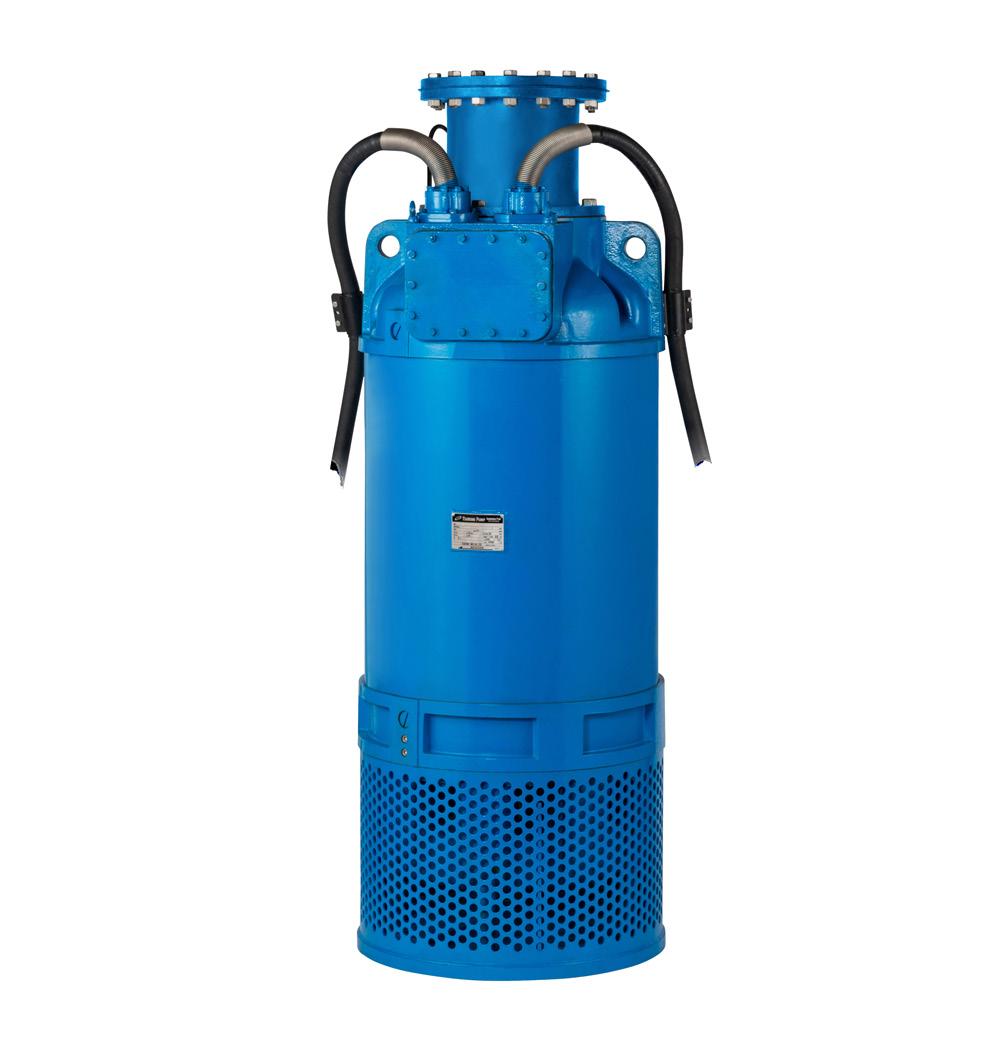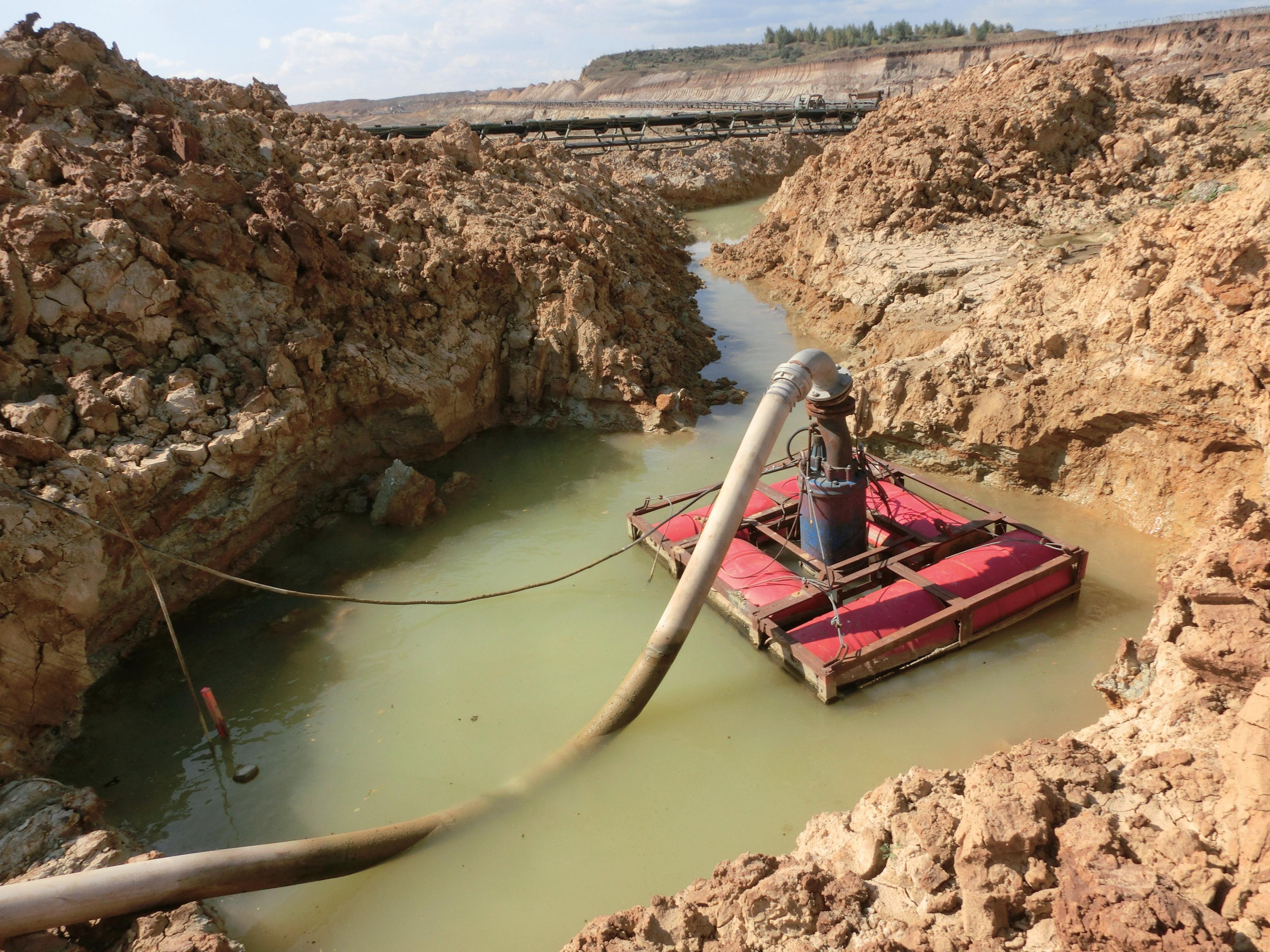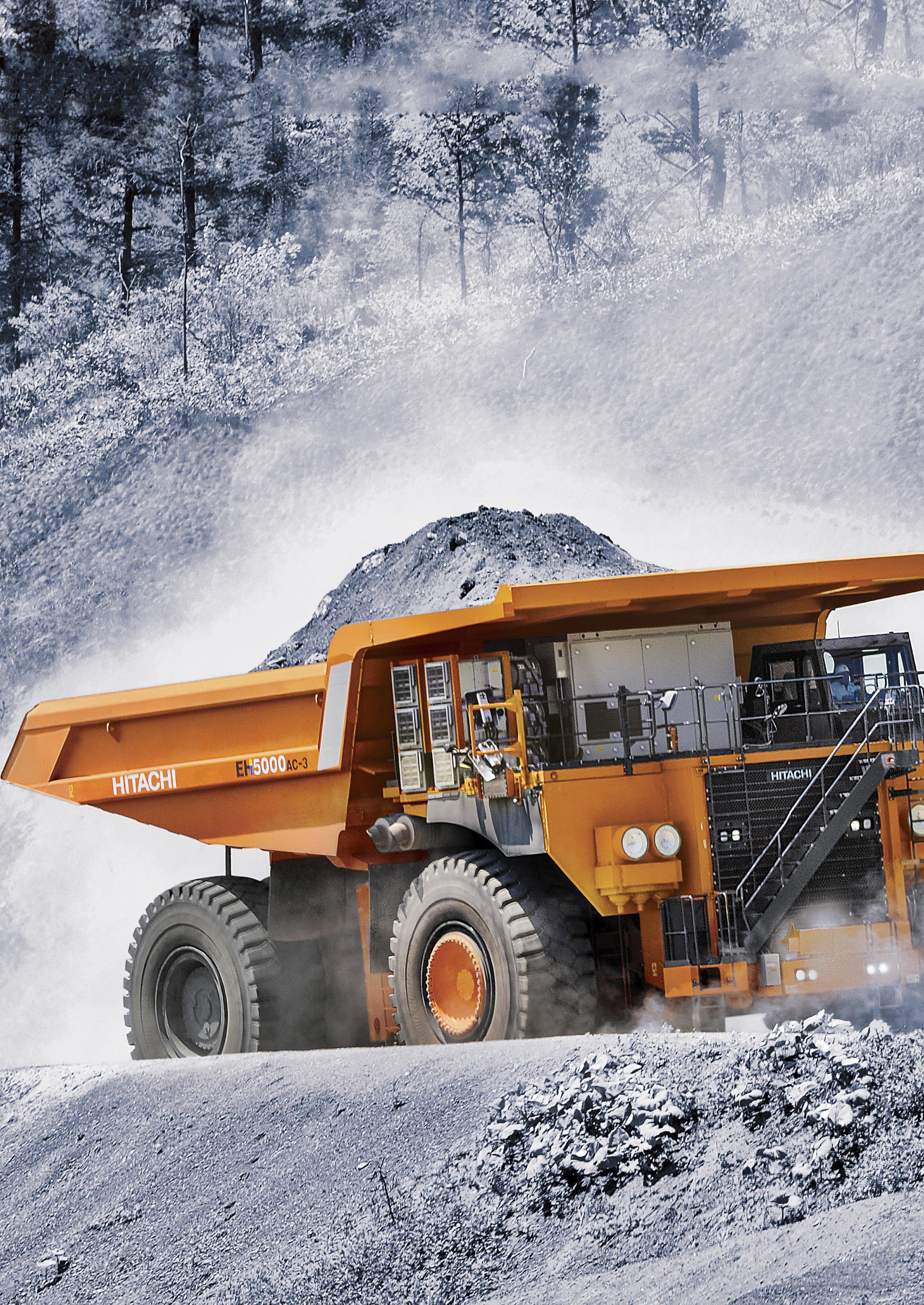
8 minute read
Carving A Path To Zero Emissions
Figure 1. Reducing emissions in haulage fleets is more complex than it first appears as these fleets are very diverse, with differing haul profiles being influenced by geography and environmental factors.
John Schellenberg, Hitachi Construction Machinery, Canada, emphasises the importance of energy management to zero-emissions technologies and describes how mines can implement such advancements, particularly in relation to loading and hauling.
In the mining industry, fossil fuels are consumed in almost every process. Loading and hauling account for around 50% of a mine’s overall usage of fossil fuels today, according to Hitachi Construction Machinery (HCM) data and other industry reviews. That number can be much higher depending on the particular application.
At first glance, it appears the loading and hauling segment is positioned as a quick win for emissions-reduction efforts. However, the reality is there are much more complex loading and hauling requirements that also represent a very broad scope of the mining segment.
Globally, surface mining haulage fleets are very diverse, with differing haul profiles being influenced by geography and environmental factors. Copper, coal, iron ore, gold, diamonds, phosphorus, and even oil are all surface mined. These mines are in climates ranging from the equator to the Arctic Circle, and from sea level to mountain tops.
Their diversity means there is no silver bullet to solve the entire issue. Currently, both traditional mining technology groups and non-traditional mining groups are striving to put solutions forward.

Bridge technologies do not solve the problem completely
This article will first look at the technologies available to help solve the problem, and then how to apply them. Some groups are pursuing e-fuels and second-generation biofuel options, but HCM views these as bridge solutions. They simply do not address the root issue of eliminating carbon from haulage activities.
Hybrid power solutions (smaller diesel engines with battery energy storage) are also a bridge technology, but they do provide advantages over simple fuel substitutions. The battery pack allows energy-capture during braking and reduces energy loss associated with operational inefficiencies.
Traditional trolley technology available today, including from HCM, is also an effective bridge solution. Electrifying high-demand segments of the haulage route helps achieve significant carbon reductions. In some applications, more than 50% of emissions can be eliminated with current proven technology, providing significant short-term benefits with minimal impact. The ability to offer a retrofittable diesel trolley solution for battery trolley technology in the future is a viable pathway; the same infrastructure can be used for charging batteries and providing energy to power the truck.
The drive toward efficiency
For HCM, the road to zero emissions is not just about reducing a mine site’s carbon footprint; it is about increasing the efficient use of energy.
For example, a traditional 220 t haul truck will carry 4000 – 5000 l of fuel on board, which equates to roughly 40 000 – 50 000 kWh of energy. However, the diesel engine’s energy efficiency is only around 40%, at best, when compared to battery/electricity energy conversion.
It is important to note that substitute fuels do not increase these efficiencies. Hybrid systems decrease fuel usage by increasing engine fuel burn efficiency by a couple percent, as the small onboard battery energy storage systems can be used to optimise the engine’s operation.
When compared to a traditional engine configuration, the hybrid system may yield a 20% energy savings through braking regeneration and reduced operational energy losses. HCM sees this as an opportunity for improvement.
HCM has identified two key development pathways that allow more
effective energy use in haulage applications: electrification and energy management.
Electrification and energy management
HCM believes mine electrification will be crucial in the early adoption of zero-emission technology. Electrification is a key segment of Hitachi’s overall business, and the company is very comfortable with it; viewing it as a solution to the haulage operation challenge.
Through electrification, energy efficiency can be increased. Energy can be captured and reused during braking, and energy use can be limited when the vehicle is not travelling. This helps offset operational practices that consume energy but are not contributing to material movement.
A battery electric vehicle (BEV) system is capable of more than 70% efficient use of energy when calculating from ‘generation to material moved’. While electrification will increase efficiency, the technology available today has some constraints compared to diesel. This is where energy management becomes critical to success.
If that standard 220 t haul truck carries 40 000 – 50 000 kWh of energy, at 35% efficiency, that would equate to 14 000 – 17 000 kWh of energy used to actually move material. With today’s technology, a battery-powered truck can store approximately 500 – 1000 kWh. If the best battery option is compared against the worst diesel option, there is still 14-times more energy on the conventional diesel vehicle.
This is where energy management becomes critical to success. The ability to move electrical energy quickly from the grid to mobile vehicles is required if electrified haulage is to be competitive with current technology. Couple that with the increased volatility in the renewable energy supply, and energy management moves to the forefront.
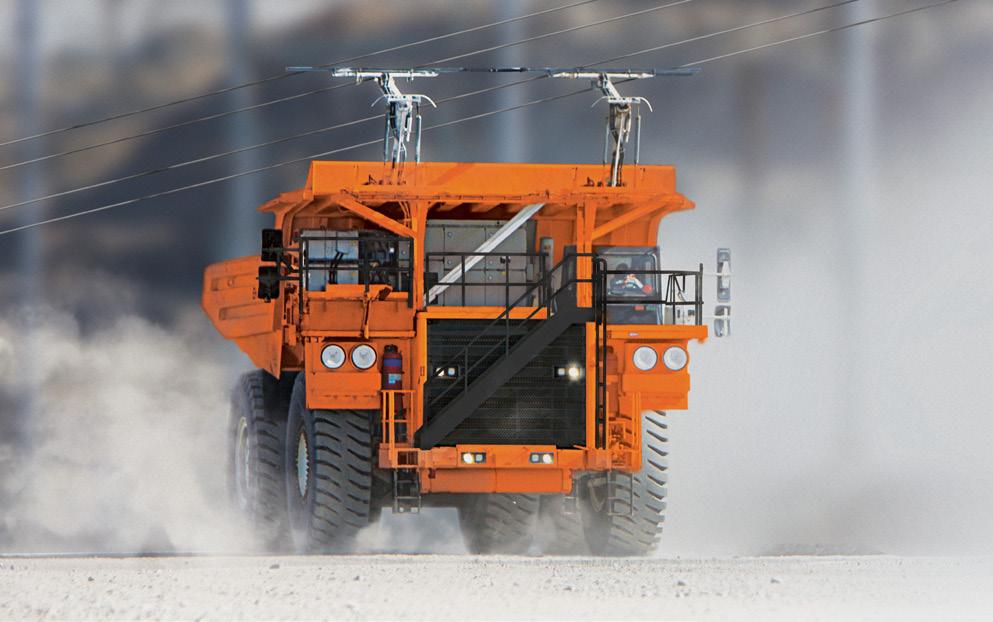
Figure 2. Electrifying high-demand segments of the haulage route helps achieve significant carbon reductions. In some applications, more than 50% of emissions can be eliminated.
Figure 3. The road to zero emissions is not just about reducing a mine site’s carbon footprint; it is about increasing the efficient use of energy.
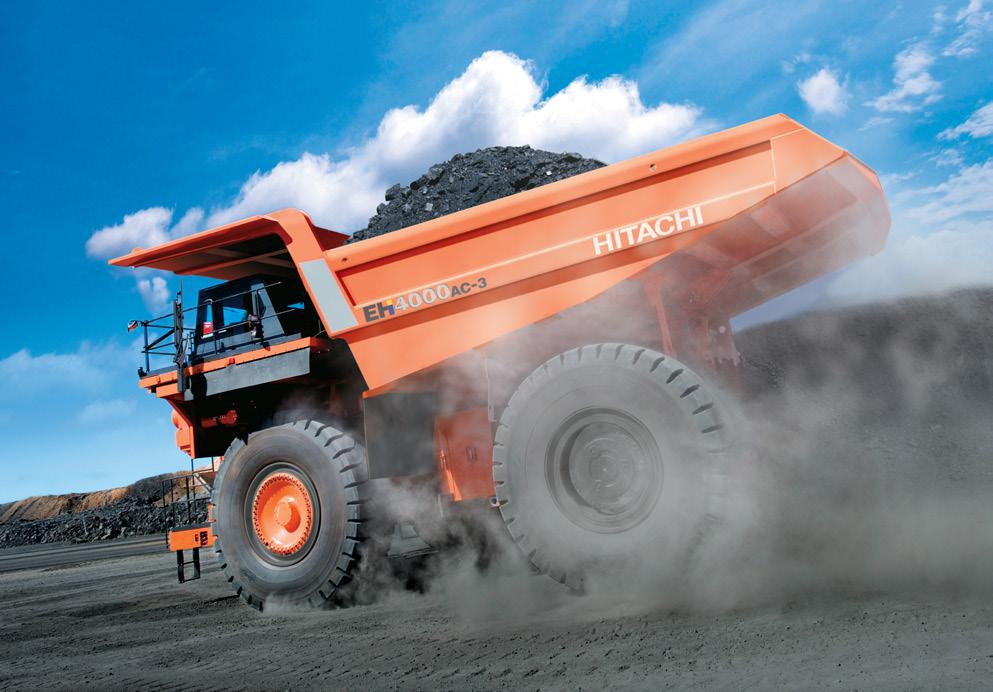
Exploring the hydrogen option
Hydrogen is another option on the electrification pathway. Hydrogen has an on-board kilowatt-hour energy storage capacity similar to batteries, so refuelling is just as important for hydrogen as it is for batteries. Hydrogen infrastructure is not as developed as electrification systems, so technology maturity will limit short-term adoption rates.
One challenge with hydrogen is its efficiency compared to BEV technology. An automotive industry study conducted in Europe compared hydrogen and BEV technology. It was found that with battery-powered e-cars, only 8% of the energy is lost during transport before the electricity is stored in the vehicle’s batteries. In the case of a hydrogen-powered e-car, the losses are much greater: 45% of the energy is already lost during the production of green hydrogen – through electrolysis – and another 55% is lost when converting hydrogen into electricity within the vehicle. This means that the hydrogen-powered e-car only achieves an efficiency of between 25 – 35%, depending on the model. A hydrogen car consumes two to three times more electricity for the same distance travelled compared to a battery car.
Accounting for the variables
The efficiency argument is quite compelling, but it does not cover all the variables faced in the mining sector. The complexity of the global haulage environment makes energy management a key focus. In some applications, a round trip will be less than 4 km with elevation variances of less than 50 m. In other applications, a haul cycle may be more than 20 km with an elevation variance of close to 1 km. Depending on the commodity, there may be a centralised loading and dumping point with little change annually, or shallow loading faces that are continually moving. These different conditions provide a variety of challenges for onsite electrification.
In some cases, the in-pit and main haulage routes are static. Electrification of these routes is the best choice. In other applications, in-pit and main haulage routes are dynamic. Here, electrification infrastructure would need to be more flexible and more mobile. The question is: at what point does the mobility of in-pit/main haulage route electrification outweigh the efficiency losses observed in hydrogen ecosystems?
A combination of these technologies will likely be required to solve most haulage and energy-storage issues when combined with renewable energy and energy storage.
By comparing off-site energy generation to onsite energy management, companies can choose a preferred pathway.
For HCM, the development of the haulage unit is the easiest part of the equation. The company already has a solid
modern electrified platform. Its development challenge consists of re-powering the current product. To help overcome this challenge, HCM has entered into an agreement with ABB Ltd to develop a battery-powered model for its current product line. The company is also monitoring developments with hydrogen, as it feels that this technology will form part of future mining requirements.
How can customers transition?
The first steps any mining organisation should take when considering a transition away from diesel are education and evaluation.
This article has outlined several technologies in the decarbonisation space, but not all of them. Traditional technology will continue to dominate the industry for some time to come, but alternatives are gaining ground. In some cases, they provide a better economic outcome than conventional practices.
HCM would like to see more customers investigate the alternatives because it is possible that currently available options will provide improved economic and environmental outcomes quickly.
Understanding what potential ‘green’ energy supply is available would be a first step. Energy availability and cost will drive the decision-making process and dictate which technology pathway is most suited to a customer’s needs.
To help with education and evaluation, several industry groups are coordinating efforts to produce libraries of knowledge and tools for self-evaluation. HCM has been participating in activities sponsored by the International Council on Mining and Metals (ICMM). ICMM is using its broad membership to collect information globally and store it online in a ‘knowledge hub’ dedicated to decarbonisation.
Contributors are not only end-users, but also mining equipment original equipment manufacturers, so there is information from both sides of the industry.
HCM’s technology pathway is based on the evaluation of its own core company strengths, however this does not mean that it ignores other solutions. One of the company’s social commitments is to achieve both a higher quality of life and a sustainable society in collaboration with stakeholders. HCM’s unique industry conditions need to be communicated to investment stakeholders and governments, so that informed decisions can be made based on industry needs, rather than the perceived needs based on unrelated applications.
Conclusion
Renewable energy will increase volatility in the power supply. Coupling this with increased electrification on the mine site and the supply vs demand equation can be very chaotic. Therefore, Hitachi feels electrification, mine plan designs, and, specifically, energy-management tools will be critical for successful green energy implementation.
There are many variables in surface mining, and the mining industry need more than one option if this complex situation is to be addressed.
